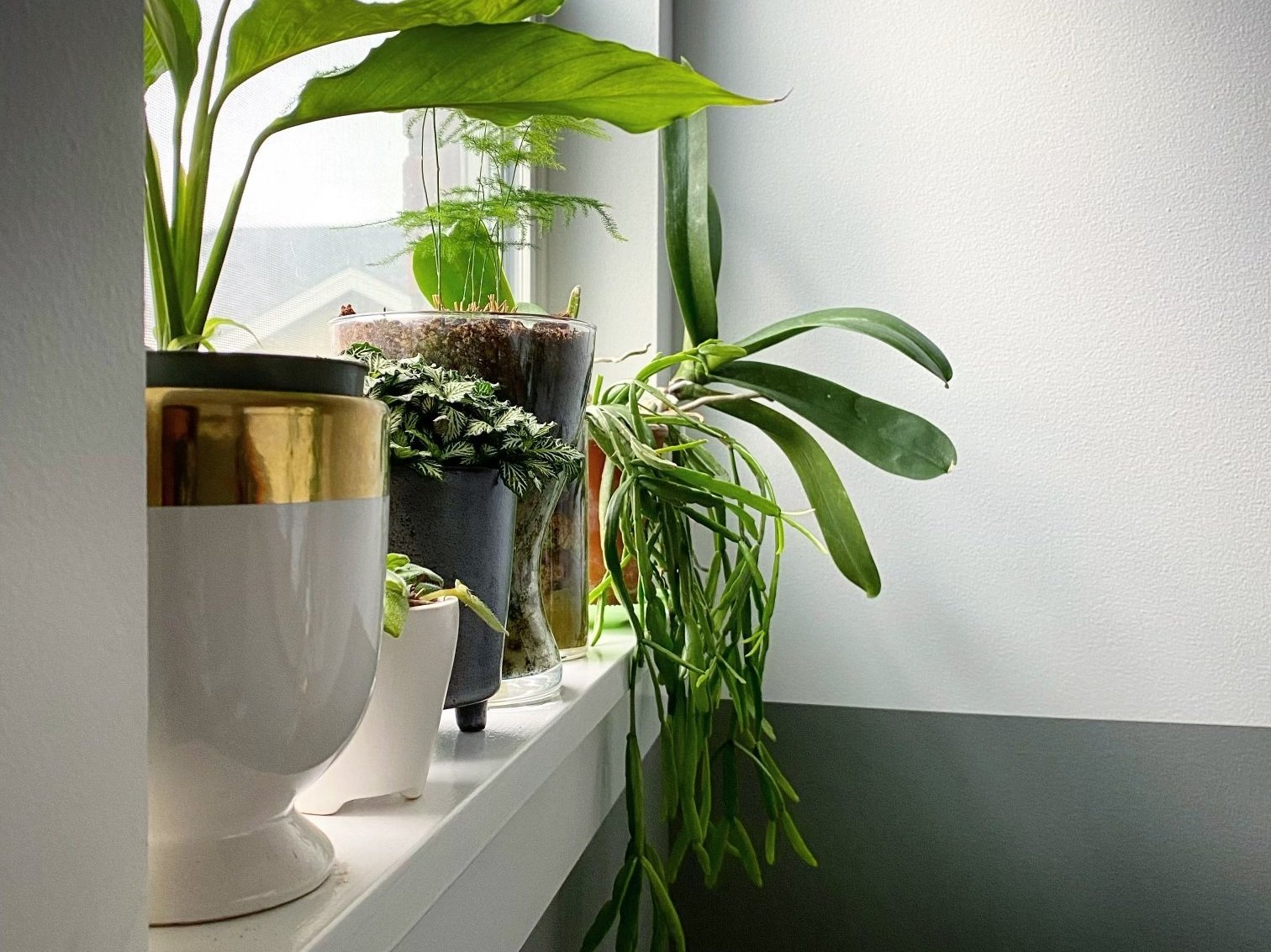Which plants thrive best in an obstructed, north-facing window?
Q. I just found Plant Daddy Podcast, and I am binging at work each day to catch up on the wealth of information and perspectives.
I’m reaching out to ask which plants might thrive best in an obstructed, north-facing window? If I need to accept that I live in a cave and need to supplement with grow lights, I can do that. I am trying to sift through the low-light myths, and I’m hoping to get a little help finding what might work best for my space.
A. So glad to hear you’re enjoying the show! To be frank, north windows are a bit limited when it comes to options, and it can be trickier the further north you get during the winter due to the shorter daylight hours and a sun lower on the horizon, but that doesn’t mean you can’t use that space!
I’ve used my north windows for Phalaenopsis, African violets, various ferns, trailing Aroids like Philodendron hederaceum, Cebu Blue, and Scindapsus. I’ve also grown peace lilies, Syngonium, Calathea and prayer plants, Asparagus ferns, ZZ plants, spider plants, Fittonia, Aglaonema, Paphiopedilum orchids, snake plants, and Rhipsalis cacti.
Basically, if a plant prefers no direct sun, or doesn’t need high levels of light to bloom or grow well, it’s a candidate I’m willing to try. Some lower light Hoyas and Jewel orchids would probably even work if you didn’t mind slower growth and no flowers - but whatever you go with, keep in mind that they’ll probably need less frequent water, since their growth is going to be slower.
The Phalaenopsis, Paphiopedilum, African violets, and peace lilies are great flowering options that will probably bloom well in that light level, but you might have to accept that some plants will simply tolerate and survive low light. These plants won’t grow much, but a true low light plant will still be healthy and attractive months and months on - just keep an eye out for signs that the light is truly too low for some plants, causing them to gradually look worse and worse over time. The typical signs can include yellowing of older leaves and dropped foliage, weak, thin, or pale, stretched growth (etiolation), changes in the color of the foliage (deeper greens or reduced variegation/colorful leaf patterns to compensate for the lower light), or root health issues (I have found it a tricky balance sometimes with plants that like consistent moisture because with low light, they aren’t using water quickly and become susceptible to root rot, but if they dry too much, they suffer as well.) Ultimately, it’s worth trying some inexpensive options to see if a plant takes to the spot well over a period of time, and that can give you a sense of other choices to look into!
And lastly, for what it’s worth, I love to extend my growing space with artificial lighting, or even supplement insufficient natural light - either duration or intensity. I put LED bulbs in lamps and light fixtures with the highest wattage the device will support (try to see what the max LED wattage is for your device - the general rating is usually for incandescent, but is not equivalent between LED and CFL wattages, unfortunately), selecting bulbs with a Kelvin rating of 4000-5000 (the lower the number, the warmer the light - 2700-3000 is pretty typical for indoor lighting, while 6500 is considered “daylight”, but indoors it can feel very blue, cold, and sterile, so I compromise to a neutral clean white) and a CRI of 85+ (this is a rating out of 100, and indicates the completeness of the light spectrum it produces.)
If you decide to go down this route, remember that light diminishes exponentially over distance, so to get the most out of your light, keep the light source within a couple feet of the plants‘ leaves, and run them for a consistent 10-14 hours a day for most plants. I love automated timers for this, and have found it’s fairly easy to come up with creative ways to have decorative lighting that isn’t an eyesore in your living space pull double duty by offering full spectrum lighting for your plants, too! Probably stating the obvious, but it always helps to find ways to position bright lights like I use for my plants in a way where you almost never see the actual light source. That does a lot to keep the living space feeling cozy and inviting even if you’re trying to replicate equatorial lighting!
We hope this helps!
***
Listeners and members of the houseplant community reach out to us with questions, requests for advice, tips, and suggestions, and often, we think the answer could be useful for other plant parents! Hopefully this helps you out!
To ask your own plant questions, email us at plantdaddypodcast@gmail.com, with Plant Question in the headline. (Questions may be edited for length and clarity!)
Happy Growing!
